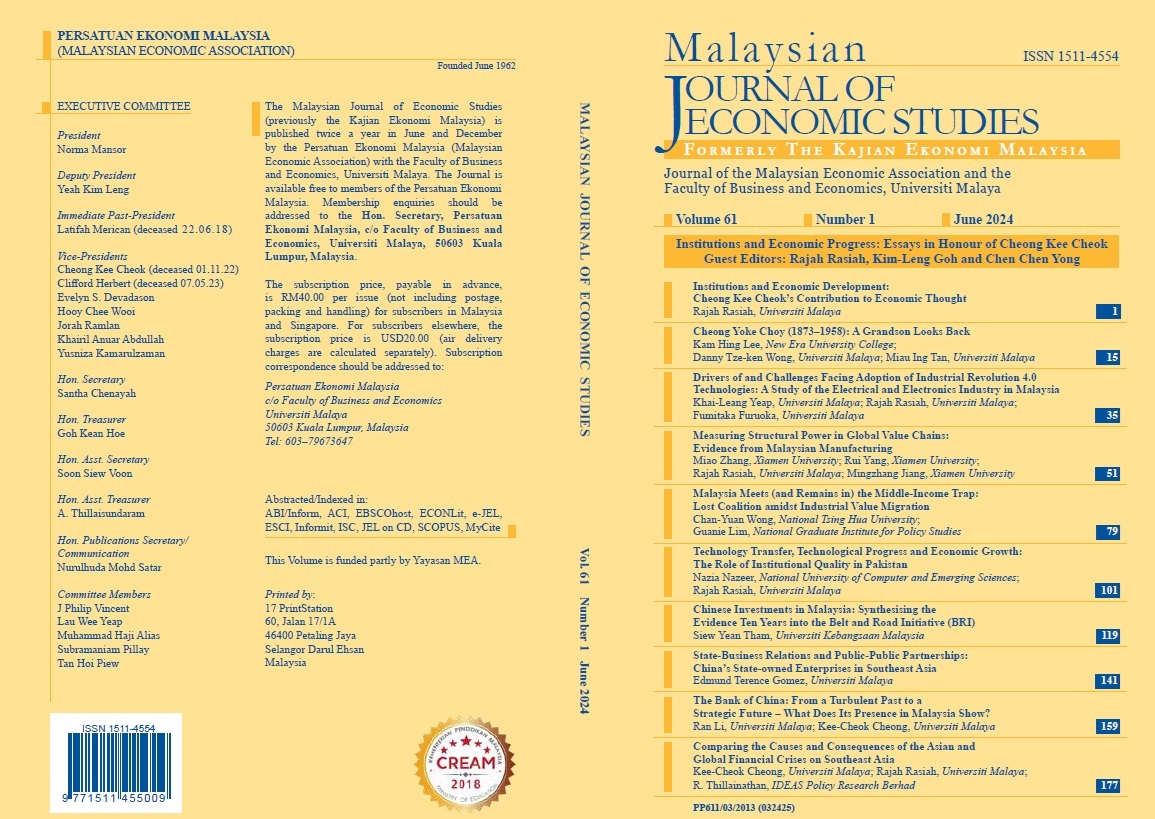Comparing the Causes and Consequences of the Asian and Global Financial Crises on Southeast Asia
DOI:
https://doi.org/10.22452/MJES.vol61no1.10Keywords:
Asian financial crisis, global financial crisis, regulation, Southeast AsiaAbstract
The arrival of the global financial crisis (GFC) just a decade after the Asian financial crisis (AFC) may have settled for now the argument about whether the world had learned enough so that economic crises are no longer possible. But it has not settled the argument of whether lessons were learned. This paper deals with this question by focusing on the experience of Southeast Asia, which has borne the full impact of both crises. For this region, these crises emerged through a combination of factors that were as different as they were similar between one crisis and another. The lessons that were learned or not learned in interpreting those factors with respect to each crisis determined each country’s response to that crisis, with politics being an important part of the calculus. Indicators just before the onset of the GFC and of its impact showed that some, but not all, lessons from the AFC were indeed learned. Whatever the lessons learned, however, Southeast Asian stock markets were decimated but which quickly rebounded. Nor would learning lessons guarantee insulation from future crises because the external environment facing Southeast Asia has changed and will continue to change.

